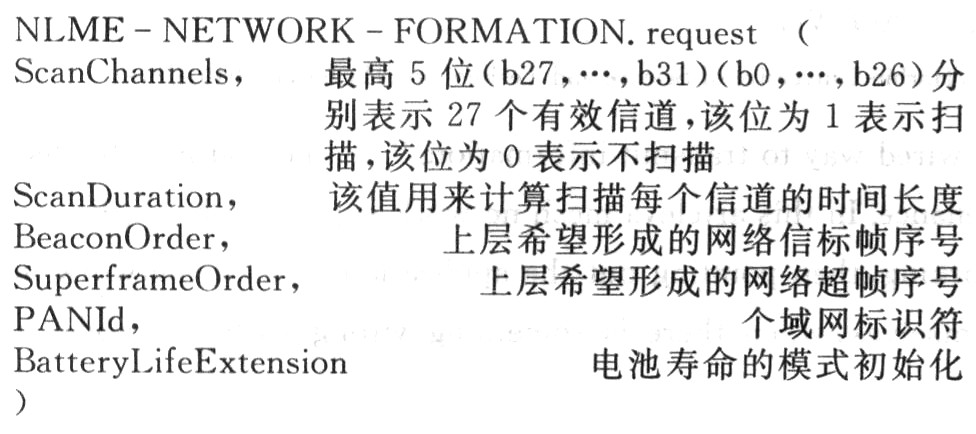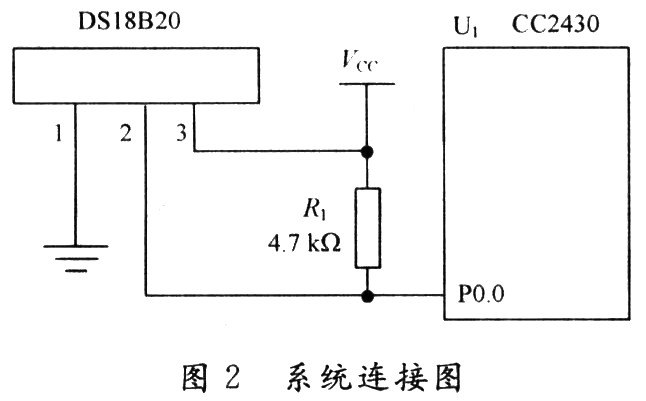Application of ZigBee technology in temperature control system 0 Introduction At present, short-range wireless communication technology has become an important branch of wireless communication technology. In reality, the data transmitted by many systems is usually a small number of burst signals. The ZigBee technology used here is a short-range wireless communication technology with a unified standard. It is used for the transmission of this type of information and works on the 2.4 GHz free-of-charge and application-free frequency band with a transmission rate of 250 Kb / s. This wireless communication technology has the following characteristics: long transmission distance, about 30 m indoors, low power consumption, under working mode, ZigBee technology has a low transmission rate and a small amount of transmitted data, so the signal transmission and reception time is very short, followed by In non-working mode, the ZigBee node is in sleep mode. In summary, ZigBee technology is used here to achieve network transmission, and Mesh network supported by ZigBee is used to achieve this function. Peer-to-peer networks are all connected by full-function devices (FFD), which can provide higher reliability. The network has a main control node, which is used to start the entire network. This main control node is powered by a special power supply. In addition, there is a control node dedicated to routing information to provide the necessary routing for information transmission. It can also participate in temperature measurement itself. There are also nodes of some terminals, which can be used specifically to measure the temperature of the endpoint. In addition, when necessary, if the network fails, they start the corresponding command, and they can also serve as a routing function. When a chip fails, it will automatically search for the next route, so that the transmission of information will not be affected; when necessary, you can even select a chip to restart the entire network system; and in this way, the relay between the chips Delivery can maximize the coverage of the network. If a star network is used, since the terminal node is not FFD, but RFD, if FFD fails, the entire system will not work, and its scope of action will also be limited. There are two ways to connect the DS18820 and the MCU on the hardware. One is that Vcc is connected to an external power supply and GND is grounded. The I / O pin is connected to the I / O line of the MCU; the other is powered by a parasitic power supply. , GND is grounded, and I / O is connected to the microcontroller I / O pin. Whether it is internal parasitic power supply or external power supply, when the sensor DS18820 is in write memory operation and temperature A / D conversion operation, there must be a strong pull-up on the bus, and the maximum pull-up turn-on time is 10 μs. Consume. Usb To Usb-C Cables,Fast Charging Usb C Data Cable,Customizable Type-C Data Cable,Premium Type-C Data Cable Dongguan Pinji Electronic Technology Limited , https://www.iquaxusb4cable.com
Here, ZigBee technology is applied to the temperature control system. Many of the existing temperature control systems are wired. The transmission of signals by wire means that the wiring is expensive, difficult to maintain, difficult to expand, and in some cases, it cannot even be successfully wired. This is a great difficulty encountered by the system, and the system's invulnerability is relatively poor. If there is a problem with the chip, the entire system will collapse. After applying ZigBee technology, the temperature control system can be changed from wired to wireless.
1 Features of ZigBee technology ZigBee's low rate, low power consumption and short distance transmission characteristics make it very suitable for supporting simple devices. ZigBee defines two types of devices: full-function devices (FFD) and simplified function devices (RFD). For full-function devices, it is required to support all 49 basic parameters. For the simplified functional device, it requires only 38 basic parameters in the minimum configuration. A full-featured device can talk to simplified functional devices and other full-featured devices, and can work in three ways, namely: personal area network coordinator, coordinator or device. Simplified-function devices can only talk to full-function devices and are only suitable for very simple applications.
2 Features of Mesh Networks in Peer-to-Peer Networks Peer-to-peer networks are all connected by full-function devices (FFD). This kind of network can provide higher reliability, as shown in Figure 1. 
This kind of wireless network has strong invulnerability. If a certain node fails, the routing node can choose another route to complete the transmission.
3 Mesh network establishment process All sites here are FFD (Full-Function Device), you can use the following method to build a network.
Each large ZigBee Mesh network can be composed of a central coordinator (PAN) and router (Router). The following primitives are used here: 
This primitive is generated by the application layer of the device with ZigBee coordinator capability, and sent to its network layer management entity, requesting to initialize the device to make it a coordinator of a new network.
This primitive returns the execution result of initializing a ZigBee coordinator request in the network. If the primitive is successfully executed, the status parameter is set to SUCCESS.
After setting up the ZigBee coordinator, NLME-PER-MIT-JOINING is adopted. The request primitive allows other devices to connect to its network. 
The valid values ​​of the parameters in PermitDuraTIon range from 0x00 to 0xFF. 0x00 and 0xFF respectively indicate whether the connection is valid and there is no definite time limit. Here, select 0xFF.
return:
NLME-PERMIT-JOINING. confirm (
Status corresponds to the request status)
When the primitive is received, the upper layer of the initialized device learns the execution result of the primitive that allows other devices to connect to the network. The result received here should be 0xFF.
In the ZigBee network, a router must also be configured. The primitive is as follows: 
Because it is a Mesh network, the parameter of Join-AsRouter is set to TURE.
After a new device connects to the network successfully, it sends NLME-JOIN. The indicaTIon primitive has the following syntax: 
So far, a complete Zigbee network has been successfully established.
This network has good invulnerability. In a Mesh network, when a link or a device fails, the upper-layer management device will reorganize the routing information. If the upper layer device lacks routing capacity or other reasons, the router device will send a routing error command frame to the master coordinator, which contains the reason for the failure. If necessary, you can even start a new node to reorganize a new Mesh network.
The ZigBee wireless self-organizing network and Ad Hoc (wireless self-organizing multi-hop network) have a little difference, the latter is to re-select a new route after a certain time, and ZigBee
4 Introduction of DS18820 chip The digital temperature sensor DS1 820 of American Dallas Semiconductor Company is the world's first temperature sensor that supports "one-line-bus" interface. There are three key steps in the whole process:
(1) Search for the serial number of DS18820.
(2) If the host controls the DS18820 to complete the process of temperature conversion.
(3) Set DS18820 to start temperature conversion and read the temperature value.
According to the DS18820 communication protocol: the DS18820 must be reset before each read and write. After a successful reset, a ROM command is sent, and finally the RAM command is sent, so that the DS18820 can be scheduled for operation.
DS18820 is divided into two parts: a read program and a write program. The read sequence is divided into two processes: read 0 sequence and read 1 sequence. For the DS18820 read time slot, after the single bus is pulled down from the host, the single bus must be released within 15 s to allow the DS18820 to transmit data to the single bus. The DS18820 needs to complete at least 60μs to complete a read timing process. carry out. The write sequence of DS18820 is still divided into two processes: write 0 sequence and write 1 sequence. The DS18820 write 0 sequence and write 1 sequence have different requirements. When writing the 0 sequence, the single bus must be pulled down at least 60μs to ensure that the DS18820 can correctly sample the "0" on the I / O bus between 15 and 45μs. Level; when the timing of 1 is to be written, after the single bus is pulled low, the single bus must be released within 15 μs.
5 System connection diagram The system connection diagram is shown in Figure 2. 
6 Conclusion In summary, in the modern temperature control system, the ZigBee technology of wireless communication can be used to easily establish the network. The Mesh network supported by ZigBee can be used to maximize the invulnerability of the network. In this way, you can maximize the coverage of the network. The DS18820 chip can also be used to collect temperature data well to complete the collection and transmission tasks. Writing different control programs to the ZigBee chip can control the heater time and duration.